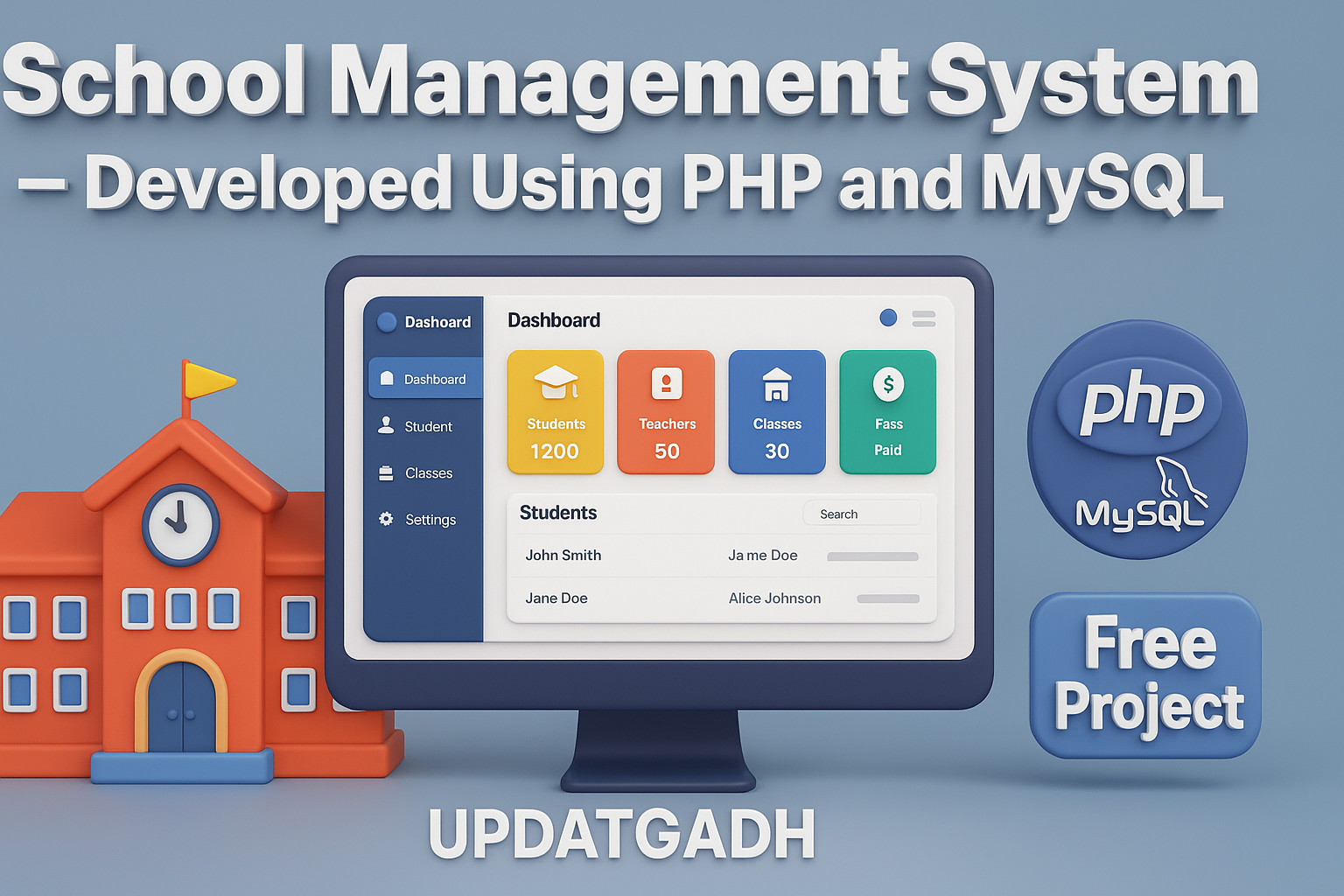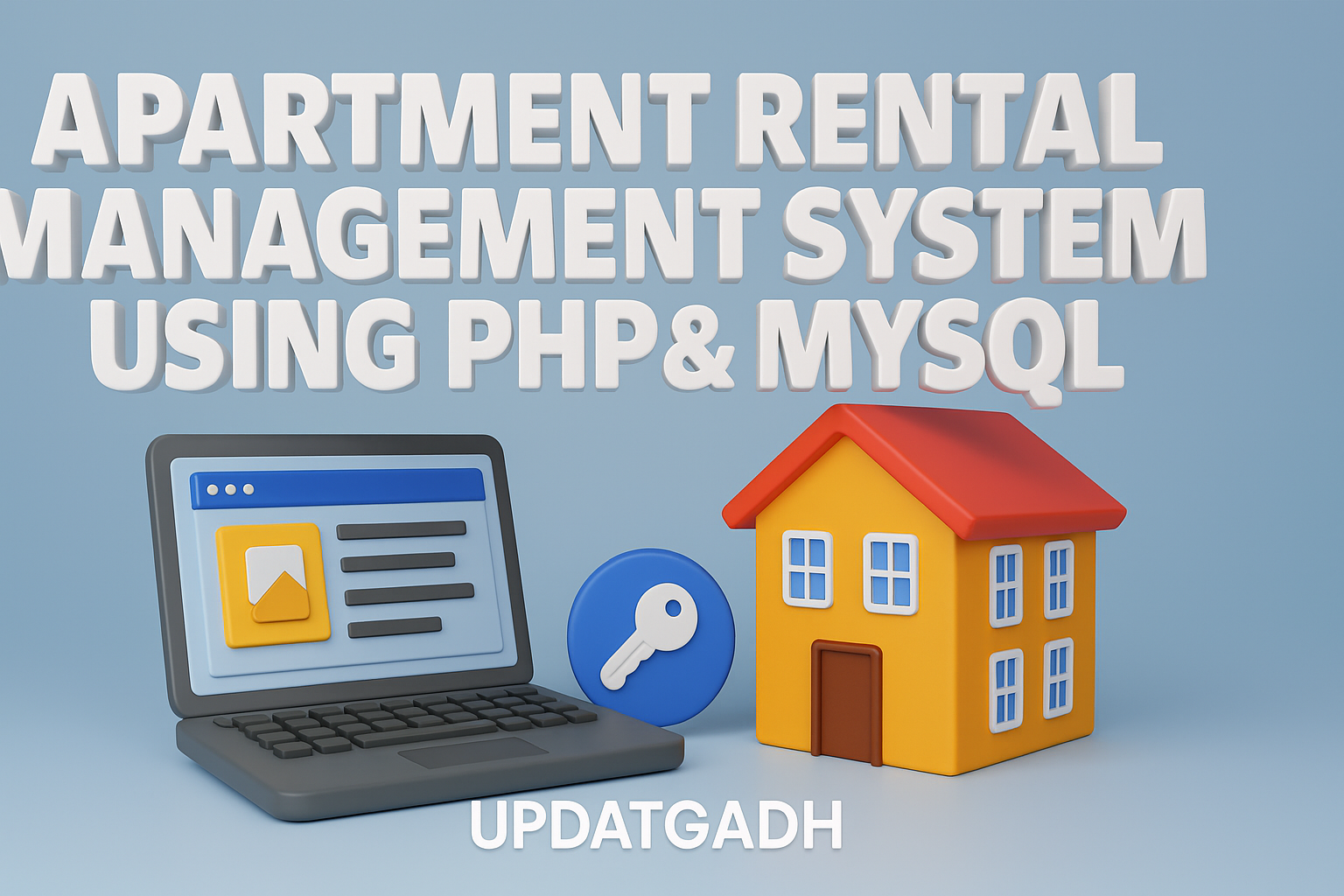
ATM Machine System using Java and MySQL Free Code
The ATM Machine System using Java -based desktop application that simulates the operations of an Automated Teller Machine (ATM). This system allows users to perform basic banking functions such as checking their balance, withdrawing money, depositing funds, and updating their account information. The project is integrated with MySQL to store and manage user account data securely. This system provides a user-friendly interface and is designed to handle transactions efficiently while ensuring data integrity and security.
ATM Machine System using Java and MySQL Free Code
Key Features of the ATM System
- 1. User Authentication
- Users can log in securely using their unique PIN and card/account number.
- Passwords/PINs are encrypted to ensure security and prevent unauthorized access.
- 2. Balance Inquiry
- Users can check their current account balance in real-time after logging in.
- 3. Cash Withdrawal
- Users can withdraw money from their account, provided they have sufficient funds.
- The system ensures that users cannot withdraw more than the available balance.
- 4. Deposit Funds
- Users can deposit money into their account, which updates their balance accordingly.
- 5. Transaction History
- Users can view their past transactions, including deposits, withdrawals, and balance inquiries.
- 6. Database Integration (MySQL)
- All user data, including balances, transactions, and account details, are securely stored in a MySQL database.
- The system retrieves and updates data in real-time, ensuring the accuracy of account information.
PHP PROJECT:- CLICK HERE
Project Structure
1. User Interface (UI)
The system features a user-friendly graphical interface built using Java Swing or JavaFX, providing an intuitive experience for users. The UI includes:
- Login Screen: Users input their account number and PIN.
- Main Menu: Options for balance inquiry, withdrawal, deposit, transaction history, and PIN change.
- Admin Panel: Accessible by the admin for account management.
2. Backend (Java & MySQL)
The backend logic is handled by Java, which communicates with the MySQL database to manage account data and transactions. The backend processes include:
- Authenticating users and managing login sessions.
- Processing deposits, withdrawals, and updating account balances.
- Recording transaction history in the database.
3. Database (MySQL)
The MySQL database stores essential data, such as:
- Accounts Table: Stores user account details, including account number, balance, and encrypted PIN.
- Transactions Table: Logs all transaction activity, including the type (deposit, withdrawal, inquiry), date, and amount
New Project :-https://www.youtube.com/@Decodeit2
Database Structure
1. Account Table
| Field Name | Data Type | Description |
|---|---|---|
| account_id | INT | Primary Key, unique account number |
| user_name | VARCHAR(100) | Name of the account holder |
| balance | DECIMAL(10,2) | Current balance of the account |
| encrypted_pin | VARCHAR(255) | Encrypted PIN for user authentication |
2. Transaction Table
| Field Name | Data Type | Description |
|---|---|---|
| transaction_id | INT | Primary Key, unique transaction ID |
| account_id | INT | Foreign Key linking to the Account Table |
| type | VARCHAR(20) | Type of transaction (Deposit/Withdraw) |
| amount | DECIMAL(10,2) | Amount transacted |
| date | DATETIME | Date and time of transaction |
Step-by-Step Project Setup
1. Install Required Software
- Java Development Kit (JDK): Download and install the latest version of the JDK.
- MySQL Server: Download and install MySQL for database management.
- Integrated Development Environment (IDE): Use Eclipse, IntelliJ IDEA, or NetBeans for Java development.
2. Setup MySQL Database
- Create a new MySQL database (e.g.,
atm_db). - Create the
AccountandTransactiontables using the SQL schema provided below:
CREATE DATABASE atm_db;
USE atm_db;
CREATE TABLE Account (
account_id INT PRIMARY KEY AUTO_INCREMENT,
user_name VARCHAR(100) NOT NULL,
balance DECIMAL(10, 2) DEFAULT 0.00,
encrypted_pin VARCHAR(255) NOT NULL
);
CREATE TABLE Transaction (
transaction_id INT PRIMARY KEY AUTO_INCREMENT,
account_id INT,
type VARCHAR(20),
amount DECIMAL(10, 2),
date DATETIME DEFAULT CURRENT_TIMESTAMP,
FOREIGN KEY (account_id) REFERENCES Account(account_id)
);
3. Java Project Setup
- Create a new Java Project in your chosen IDE.
- Add JDBC driver for MySQL to your project. This is required to connect Java with MySQL. You can download the MySQL Connector/J from the official MySQL website and include it in your project’s classpath.
Online Resort Management System in PHP & MySQL with Code
4. Database Connection in Java
Set up a JDBC connection to connect your Java application with the MySQL database:
import java.sql.Connection;
import java.sql.DriverManager;
import java.sql.SQLException;
public class DatabaseConnection {
public static Connection connect() {
try {
String url = "jdbc:mysql://localhost:3306/atm_db";
String user = "root"; // Your MySQL username
String password = ""; // Your MySQL password
Connection connection = DriverManager.getConnection(url, user, password);
return connection;
} catch (SQLException e) {
e.printStackTrace();
return null;
}
}
}
5. User Authentication
You can create a login function that verifies the user’s account number and encrypted PIN from the database:
import java.sql.Connection;
import java.sql.PreparedStatement;
import java.sql.ResultSet;
public class ATMLogin {
public boolean authenticateUser(int accountNumber, String pin) {
Connection connection = DatabaseConnection.connect();
try {
String query = "SELECT * FROM Account WHERE account_id = ? AND encrypted_pin = ?";
PreparedStatement ps = connection.prepareStatement(query);
ps.setInt(1, accountNumber);
ps.setString(2, pin); // Encrypt the entered pin before comparison
ResultSet rs = ps.executeQuery();
return rs.next(); // If result set is not empty, the user is authenticated
} catch (Exception e) {
e.printStackTrace();
return false;
}
}
}
6. Transactions Handling
Functions can be created to manage balance updates, withdrawals, deposits, and transaction history logging.
Complete Code
The ATM Machine System using Java and MySQL provides a comprehensive solution for simulating ATM functionalities. With secure user authentication, real-time balance updates, and a user-friendly interface, it offers a reliable framework for learning and implementing financial systems in Java.
- ATM Machine System in java with source code
- atm program in java using switch case
- atm program in java using methods
- atm program in java using if-else
- atm management system project in java pdf
- ATM Machine System in java using inheritance
- atm project in java using eclipse
- java ATM Machine System github
- atm machine system using java with source code
- ATM Machine System using java pdf
- atm machine system using java github










Post Comment